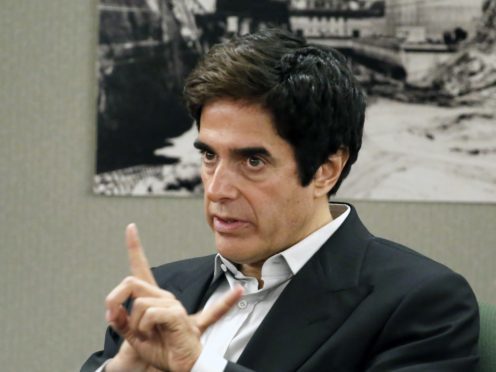David Copperfield has insisted that he knew of no one being injured during 20 years of performing a signature vanishing act at the centre of a lawsuit by a British tourist who claims he was seriously hurt in a fall during a Las Vegas performance.
Amid complaints from his lawyers about widespread media coverage, the world-famous illusionist returned to the witness stand, telling a Nevada jury about the trick that makes people seems to disappear on stage and reappear in the back of the theatre.
At least 55,000 audience volunteers have taken part in the illusion in the two decades, according to Copperfield and show executive producer, Chris Kenner, who testified last week.

In about 60 to 90 seconds, stagehands with torches hurry the randomly chosen participants past dark curtains, down unfamiliar passageways, around corners, outdoors, indoors and through an MGM Grand resort kitchen to re-enter the theatre and “reappear” for the show finale, according to testimony.
Copperfield remains on stage the entire time.
Benedict Morelli, lawyer for Gavin Cox, has characterised the route as an obstacle course and the pace as dangerously fast for people who might not have appropriate footwear and are not told in advance what they will encounter.
Copperfield said he and stagehands assessed the capabilities of audience volunteers as they approached the stage, climbed stairs and seated themselves in a boxy 13-seat apparatus for the illusion.
The trick is dubbed “the Thirteen,” for the number of seats.
David Copperfield reveals details of magic trick in court after a man claimed he was seriously injured during one of Copperfield’s illusions pic.twitter.com/nvYB2f3KUz
— TODAY (@TODAYshow) April 19, 2018
The jury has been told that some volunteers were turned away.
Over the objections of Copperfield lawyer Elaine Fresch, Mr Morelli asked Copperfield if he thought the number of people not injured by the illusion over the years suggested that it was safe.
“I’m not in the business of hurting people,” Copperfield said.
“The illusion must be safe because of how many people have done it without getting injured?” Mr Morelli asked.
“Numbers are not a defence,” Copperfield said, adding he could not remember hearing of anyone getting hurt.
Copperfield said he did not know Mr Cox claimed to have been injured in November 2013 until he was sued the following year. He said he stopped performing the illusion a year later.
Mr Cox, from Kent, alleges he fell after being hurried by stagehands through an alleyway coated with a powdery residue near a large rubbish bin.
He is claiming lasting brain and bodily injuries from his fall have cost him more than 400,000 US dollars (£286,000)in medical care.
